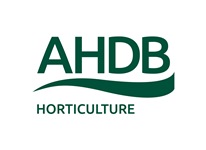Forecasts for three important pest aphids of vegetable and salad crops – peach-potato aphid (Myzus persicae), potato aphid (Macrosiphum euphorbiae) and cabbage aphid (Brevicoryne brassicae) have been released via AHDB Aphid News.
Despite the brief cold snap at the end of February, typical winter temperatures have fallen in line with the long-term average throughout most of England, meaning that first flights of these aphids are likely to occur at the ‘normal’ time – and neither be very early or very late. Temperatures in Scotland, however, were around half a degree lower than the long-term average and the first aphid flights could be around a week later than average in these areas.
The long run of aphid data from the suction-trap network, managed by Rothamsted Research, combined with the long run of weather data available from the Met Office and others, make it possible for the start of aphid flights and aphid abundance in spring and early summer to be forecast. The mean temperature in January and February is critical in driving the results arising from the aphid forecasting service.
Forecasts are available only for aphid species which pass the winter in active stages, rather than as cold-hardy eggs, as they are able to take advantage of warm conditions. Forecasts for the species that overwinter as eggs (willow-carrot aphid, lettuce root aphid, currant-lettuce aphid, black bean aphid) will be available later as part of the AHDB Pest Bulletin.
 Rosemary Collier
Rosemary Collier

 Please wait - comments are loading
Please wait - comments are loading
 Loading…
Loading…


